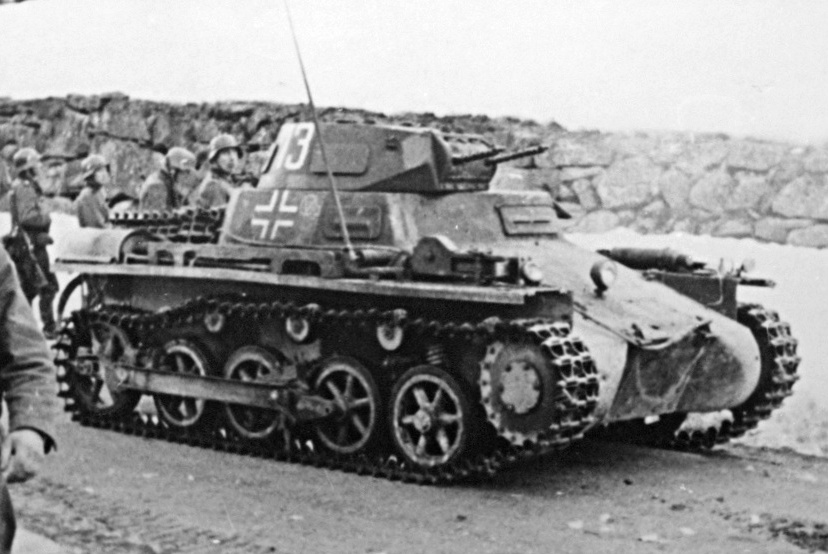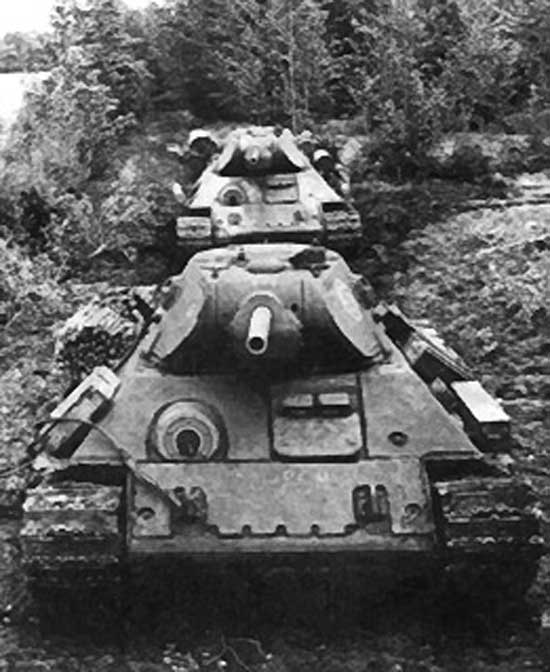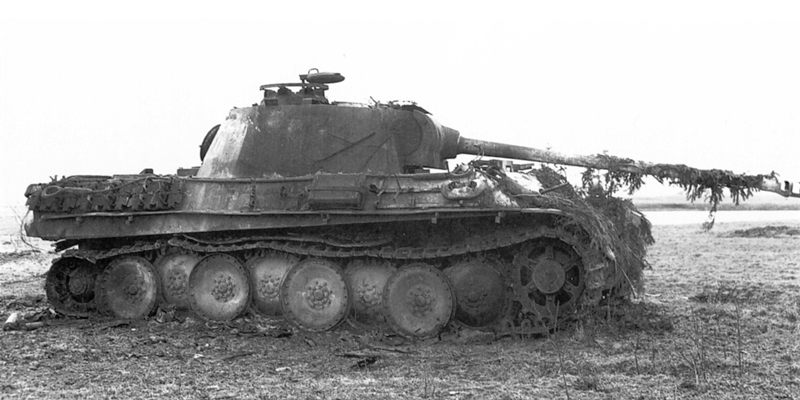Our Tank centenary commemorations continue with a blog from David R. Higgins, author of the recently published Duel 71: M48 Patton vs Centurion and a range of other Osprey books. In this piece he looks at German and Soviet tank development in the build up to and during the Second World War.
On 15 September 1916 tanks made their battlefield debut, and although lacking in speed, reliability, and endurance, the lozenge-shaped British vehicles proved capable of crossing what had been for the last two years a deadly, largely impassable no-man's land. Although the initial effort failed to produce a breakthrough, improved designs and greater numbers eventually proved decisive on an operational scale, as evidenced by the German High Command attributing tanks and insufficient reserves as the primary reasons for seeking an Armistice in 1918. Following the war the victorious tank producers of France and Britain saw little need to alter what was seen as a winning armour doctrine, and as a result envisioned any future war as essentially a modernized version of the previous one. The defeated nations of Russia, and especially Germany, however, looked for ways to avoid fighting another costly war of attrition, and focused on tanks as a solution.
With the diminutive French Renault FT epitomizing perhaps the most successful tank design during World War One the majority of armoured vehicle designs of the 1920s and 1930s retained its basic layout, including a suspension, small crew, and high-mounted, rotating turret housing a single main armament and commander's cupola. As larger, cheaper, flat trajectory cannon could be produced en-masse as dedicated, towed antitank options it triggered an arms race of ever-improving tank designs. Secret German-Soviet military cooperation between 1922 and 1933, in particular near Kazan, Russia, resulted in several prophetic developments, such as a tank radio. Tank doctrine was also wargamed and tested, which gravitated toward applying overwhelming armoured, mechanized, and motorized forces incorporating integrated engineer, artillery, reconnaissance, and other assets to penetrate narrow but key battlefield sectors to enable fast-moving formations to strike deep into an enemy's rear areas to disrupt command and control, and logistics, and to sow confusion and demoralize. While the Germans emphasized modernizing successful WWI-era Stosstruppen infiltration and exploitation tactics to bypass resistance for the sake of maintaining shock and momentum, the Soviets leaned toward similar, deep offensive operations suited to the nation's expansive, underdeveloped territories and considerable armoured vehicle numbers.

During the German (and Soviet) invasion of Poland (1939) the battlefield application of these "blitzkrieg" operations helped secure victory within a few weeks. The fact the Germans had to predominantly field the ill-suited 5-tonne Panzer I (13mm maximum armour; 2 machine guns) and 9-tonne Panzer II (15mm; 20mm cannon) training tanks, due to production delays of the purpose-built 23-tonne Panzer III (15mm; 37mm cannon) and the 18-tonne similarly-sized infantry support Panzer IV (30mm; 75mm short barrel), the underlying armoured doctrine was proven valid. Western European adversaries largely rooted in outdated military mindsets and lacking Germany's more mature command and control mechanisms and motivation suffered similar defeats in 1940/41. Faced with the prospect of fighting their Soviet partners in mid-1941, German leadership anticipated another rapid campaign, which included greater numbers of Panzer IIIs (30mm; 50mm) and IVs (80mm; 75mm short barrel).
During Germany's invasion of the Soviet Union (Operation Barbarossa), the majority of fielded Red Army tanks comprised the 12-tonne BT-7 (13mm; 45mm), which with its Christie suspension provided excellent speed and cross-country maneuverability for the vehicle's weight. While existing German tanks and antitank guns could effectively deal with the design, the introduction of the "medium" T-34 proved a game changer. Although sloped Rolled Homogeneous Plate (RHA) was not a new feature of contemporary armour (e.g. the French SOMUA S35), this 27-tonne Soviet tank possessed a formidable mix of thick angled armour (45mm), armament (76.2mm), reliability, and maneuverability. With no effective counter, save the towed high-velocity, dual-purpose 88mm antitank gun, the Germans scrambled to develop a dedicated tracked response. One solution was to get the heavy, slab-sided breakthrough design out of the prototype stage and into production, but what became the 54-tonne Tiger I (120mm; 88mm) would not be available until September 1942. In the interim, however, they were forced to field makeshift Panzerjäger solutions in which equally powerful cannons were mounted atop captured or obsolete tank chassis.
 T-34 Model 1942 near Leningrad, 1942
T-34 Model 1942 near Leningrad, 1942
In attempting to find the best mix of firepower, protection, and maneuverability, everything represented a compromise. Incorporating thicker armour plating increased vehicle weight, and commensurately required stronger suspensions, transmissions, and engines. While angling plate presented a greater relative thickness to an incoming solid shot round compared to its vertical equivalent it also redirected the projectile's kinetic energy and promoted its elastic deformation, which due to its bullet shape, low absolute weight, and short length to width ratio, promoted shattering or deflection. To minimize vehicle weight its heaviest armour was located to the front, with the chassis generally being RHA. As rotating turrets were susceptible to strikes from multiple directions curved, cast armour was prevalent with contemporary vehicles, which although generally requiring less sophisticated machinery, expertise, and costs to produce, its lack of hardening meant it was comparatively softer and more susceptible to penetration. To counter the increasing use of short-range shape-charged weapons that could penetrate the thickest contemporary armour, German and Soviet counter-measures were to apply thin skirt plates to vehicle sides to force premature detonation that greatly dissipated the effects of their directed molten jets.
Having fought against ever more numerous T-34s, and its 45-tonne KV-1 (90mm; 76.2mm) cousin throughout 1942, in mid-1943 the Germans fielded what they thought would give them the qualitative edge for the foreseeable future. Similar in shape, but larger than the T-34, the resulting 43-tonne Panther (100mm; 75mm) possessed an excellent balance of firepower, sloped armour, and mobility. In contrast to the simpler, mass-produced Soviet designs, German engineers opted for rather over-engineered medium and heavy tanks like the Panther and Tiger. With logistics paramount to keeping vehicles in the field supplied with ammunition, replacement parts, petrol, oil, lubricants, and other combat necessities, breakdowns could unduly task towing and maintenance efforts. In contrast, more numerous Soviet tanks attempting to conduct deep offensive operations through brute force were handicapped by their lack of radios for individual non-command vehicles, with the result that tactics were commonly set-piece to maintain order, which left them unable to flexibly adapt to changing battlefield conditions. By 1944 the massive amounts of American Lend-Lease tanks, aircraft, transport, raw materials, foodstuffs, and other essentials necessary to propagate a war of manoeuvre promoted endurance for the new Soviet tanks designed to better combat heavier German opponents. While the T-34 was up-armed with a 85mm gun, the KV-1's chassis was mated to a turret housing a 122mm cannon resulting in a 46-tonne IS-2 (110mm; 122mm). Although the latter's heavy, two-piece round lacked the muzzle velocity of contemporary direct-fire weapons, its mass proved capable of crushing or deforming armour plate instead of penetrating it.
 Burnt out Panther Ausf.G at the Battle of the Bulge
Burnt out Panther Ausf.G at the Battle of the Bulge
During this period Germany's production of armoured vehicles had increased considerably following the nations transition to wartime economy, and Albert Speers appointment as Armaments Minister. With German vehicles such as the Panzer III and Panzer IV having initially been developed with large turret rings, over the year they were steadily up armed to remain competitive. With Hitler's desire for ever-heavier tanks the 69-tonne Tiger II (180mm; 88mm) represented the largest operational tank fielded during the war. While incorporating parts and components intended to be common among other vehicles to reduce production costs and aid maintenance, its great weight placed a considerable strain on its transmission, engine, and gasket seals, and hampered maintenance and towing, making it unsuited for anything other than defensive operations. Although the Panther and Tiger were individually superior to the great majority of their enemy contemporaries, and German forces were very adept at organizing tactical kampfgruppen (battlegroups), crew training and experience, and effective supply remained paramount in determining combat victory. Ultimately, the cumulative effects of fighting a multi-national, multi-front war took its strategic toll, which including vast numbers of Allied and Soviet armoured vehicles and maturing doctrine and application simply overwhelmed German tanks forced to operate in an environment of disintegrating logistics and ad-hoc battlefield solutions.
David R. Higgins has published a number of books with Osprey, five of which look at armoured warfare in the 20th century. Click here for more details.

Comments
You must be logged in to comment on this post. Click here to log in.
Submit your comment